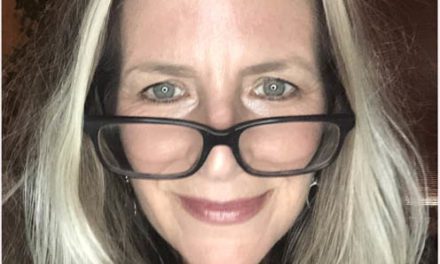 By Margaret Evans, Editor
By Margaret Evans, Editor
When you’ve been an editor and columnist for as long as I have, “you can’t please everybody” proves itself the one unassailable maxim. No matter how fragile your ego, how delicate your sensibilities, you make an uneasy truce with criticism.
The good feedback takes the edge off the bad, you learn to stop taking either very seriously, you remind yourself frequently that your mama loves you anyway, and life goes on. Ob-la-di, ob-la-da . . .
But every now and then, a complaint comes along that catches you completely off guard. Maybe you should have seen it coming – like hail on a hot summer’s day, it happens – but you didn’t. And those chunks of ice hit hard when they fall out of the clear blue sky.
The cover of our last issue featured a painting by the late Lowcountry artist Sam Doyle called “Adlade a Slave.” We used the image because: A) we liked it; and B) we were running an article about the Sam Doyle Celebration exhibit currently hanging at ARTworks. The press release had come with a different Doyle image – a Penn School drummer – but it was far too small to use as a cover. We discovered this inconvenient truth while finishing up the paper on a Sunday night; we go to press on Monday morning. Doubting we could obtain a larger file on Sunday night, we searched for another Doyle painting that might work. We finally lit upon “Adlade a Slave,” the only piece we could find on short notice that was large enough for our purposes and had the right composition. According to the SC Arts Commission website, the painting is part of the State Art Collection. It is bright, beautiful, evocative. We thought our readers would love it, and we were pleased that we could help publicize this special event in our community. We put the paper to bed – exhausted but happy – and all was right with the world.
Until a few days later, when this comment appeared on our website:
Editor Margaret Evans confided in her opinion piece Back to The Book (September 10, 2013): “I’d lost my powers of concentration and contemplation. My focus had become scattered, fragmented. Thanks to the Internet, I knew a little bit about a wide range of subjects – probably wider than ever before – but I’d lost my ability to go deep.” Ms. Evans should have gone deep before she chose to “celebrate” the late Sam Doyle by putting “Adlade A Slave” on the cover of the Lowcountry Weekly. The painting is a highly personal tribute to a member of the artist’s family who survived the horrors of the era. I have no doubt that many Lowcountry residents are chagrined that Mr. Doyle’s evocative artwork was transparently used as a provocative marketing tool. – Gordon W. Bailey
Fighting a wave of nausea, I checked the article above the comment to confirm what I thought – that Gordon W. Bailey was one of the partners sponsoring the Sam Doyle Celebration, along with ARTworks, Penn Center, and the Red Piano Too Gallery. Some frantic googling revealed that Mr. Bailey is a noted art collector from Los Angeles, with a large and impressive collection of Southern folk art.
Getting over the initial gut kick, I was furious! I felt misunderstood, maligned. Most of all, I felt hurt. I banged out a website comment of my own, throwing in some indignant zingers like the following:
. . . Mr. Bailey, perhaps I’m not ‘deep’ enough to understand your anger . . .
. . . When you say the image was “transparently used as a provocative marketing tool,” I honestly don’t know what you mean. Lowcountry Weekly is a free paper that exists mainly to promote arts and culture in Beaufort County. Having this picture on our cover in no way benefits us monetarily. Our hope was that those hosting this exhibit (including yourself) and ARTworks would benefit from the FREE publicity . . .
. . . Lowcountry Weekly has been promoting the arts in this area for almost 15 years. We have never made a profit. This publication is, and always has been, a labor of love. To have that love, offered freely and joyfully, thrown back in our faces, is surprising and extremely upsetting. . .
There! That felt good. Gordon W. Bailey, Mr. Big Time L.A. Art Collector, would surely see the error of his ways. He obviously knew nothing about me or my publication. He’d just made some easy assumptions and jumped on that great American bandwagon, the Outrage Express.
Then I took a deep breath, got past my own outrage, and started thinking. (Uh oh.) Why was he so angry, anyway? I truly didn’t understand. In this crazy-quilt culture that’s tattering into a million pieces, we owe each other an attempt at understanding, right? Was the painting just too personal? That seemed an odd complaint. Most art is personal; and this piece is part of a public art collection, not under wraps somewhere. Was he angry because the painting depicted a slave? Jonathan Green, who’s graced our cover many times, often alludes to SC slave culture in his work; we’d never had a complaint. Perhaps it was the actual word “slave” that offended? The title of the painting appears on the canvas itself in bold letters, and we did not censor it. Is “slave” taboo now? Something we’re not supposed to say or write, kind of like “the N word”? If so, nobody told me.
Mr. Bailey accused us of using this image as a “provocative marketing tool.” If he meant we were trying to “market” the Sam Doyle exhibit in which he, himself, was participating – a benefit for ARTworks! – then I guess he had a point. But I don’t think that’s what he meant. He was accusing us of using an inflammatory image in a crass attempt to move merchandise. While we don’t sell our publication, we certainly like to have it picked up. So do our advertisers. But we’ve found that “bright and beautiful” usually does the trick. In a town like Beaufort, “provocative” is more trouble than it’s worth.
It simply hadn’t occurred to me that this image was provocative – not in any negative sense. But if, by “provocative,” you mean challenging, stimulating, thought provoking? Okay, I’d cop to that. Yes, we put a “provocative” image on our cover in hopes that people would be drawn to its vibrant colors, but also to its content. We hoped they’d see the inherent dignity of the woman in the painting, a quality that shines forth despite the harsh conditions of her life. We hoped they might ponder those harsh conditions, and think never again.
I’d just finished writing that last paragraph – and was feeling good and justified! – when Mr. Bailey came back with another comment. He informed me that there had always been a larger version of the original picture available (a note I’d missed in the press release) and that five other Doyle images had subsequently been emailed to all local publications. I searched my sprawling jungle of an inbox and found nothing of the sort; it’s not the first time an important email has failed to arrive, and I’m sure it won’t be the last. But now I was starting to see from Mr. Bailey’s point of view. Damn.
He added: “Doyle’s powerful painting evokes an era that has a stinging resonance to Americans and is particularly personal to Lowcountry residents. I am certain that many feel Lowcountry Weekly’s use of this image to ‘promote’ the Sam Doyle Celebration is inappropriate.”
And there it was. Though it hadn’t occurred to me that this cover was remotely “inappropriate,” I now had to reconsider. As an American and a southerner, the slavery era has a “stinging resonance” for me, too, but that resonance is not as personal as it is for some. There are no slaves or slave owners in my family history. I could have been more sensitive. Another point to Mr. Bailey.
I still feel misunderstood. I know my own heart, and I know what was in it when I put “Adlade a Slave” on our cover. I believe Mr. Bailey made some unfair assumptions about me and my publication. But that’s what we do nowadays, in this hyper-connected – yet oddly disconnected – world, where grievances are addressed in public comment boxes instead of personal notes or face-to-face. So, I will extend to Mr. Bailey the benefit of the doubt, the one he withheld from me. I believe he collects folk art for the same reason I like to put it on our covers – because he finds it beautiful and moving and a tribute to the human spirit. I believe it was his great love and respect for this art – and those who make it – that drove his anger. I may feel misunderstood, but I understand.
I spent a week writing this piece. It’s had at least three different conclusions. When I started with the title “Provoked,” I was talking about myself. I decided to keep it anyway.






